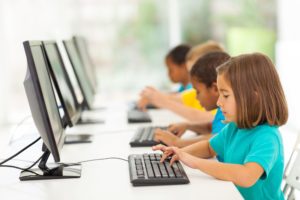Stepping outside of the status quo
Let’s be honest. When it comes to raising our children, we’re all just trying to make the best decisions we can with the information we have. And when we’re thinking of stepping outside of the “normal” way of doing things, we ask ourselves some hard questions. Is this really the best decision for my child? Why aren’t more families making the same choice? Will this decision still be the best thing for them years down the road? (Though, let’s be honest… we even ask ourselves these questions about the “normal” way of doing things.)
Graduating from an alternative school to a traditional college
At Microschool Revolution, we talk to parents who want their children to have an education that will actually help them in life, but are hesitant to take the plunge into an alternative school model. There are some good questions to ask and think through.
The biggest concern isn’t whether their students will be learning useful things at a student-centered school. The biggest concern is often whether their child will be ready for college when the time comes. When students who haven’t been learning in a traditional classroom are suddenly put into the typical college course, will they be able to sit and take notes? Will they be able to work within a typical grading framework, taking written tests to show mastery of concepts? Or, backing up a step, will the students even be able to take the standardized tests – SAT and ACT – to get through the college admissions process?
These are valid concerns. Eventually, these students will move on to the next step in their education, whether its college or something else. We can’t afford to pretend that today’s students will never need to learn in a traditional classroom setting. The best thing we can do for them is to arm them not only with a solid education, but also with the strong interpersonal skills and self-management they’ll need to succeed in their next learning environment.
Self-directed graduates with highly applicable skills
Here’s our perspective on some of these difficult questions.
Traditional classroom framework
In a high school that follows the microschool model, students are encouraged to take virtual classes at colleges or through programs that can give them more specific education in their field of interest. By the time they graduate, high school students will have experience with a more traditional assessment structure through their participation in these courses. Most eLearning software also gives unit tests, so students are familiar with taking timed tests as assessments.
Standardized testing
We don’t encourage learning coaches to pin the progress of their schools on a standardized test. However, taking a standardized test every once in a while can be used in combination with other tools to understand where students are doing well and where they might need more help. In a typical microschool, students will have taken one standardized test a year. This way, they are familiar with how standardized testing works without incurring the anxiety that often results from government-mandated testing.
Tools to succeed in any environment
The primary goal of a school with student-directed learning is to cultivate self-directed agency within each student. Ideally, graduates are self-driven and chase after an education because it’s interesting and useful, not because of external pressure. Self-directed students are not micromanaged. Because of the independence they are given in the learning center, they know how to manage themselves and their time. That’s a critical skill many college freshmen struggle to learn in their first year.
Graduates of microschools have experience with Socratic dialogues that builds strong critical thinking skills that will benefit them in presentations, writing, and any college-level coursework. By focusing on skills and learning how to learn, microschool graduates will actually be ahead of many of their peers.
Higher college admission rates
This reasoning all sounds nice in theory, but does it actually work? Yes! Students who are home schooled have a higher admittance rate to colleges than general applicants.[1] While the microschool model is not the same thing as homeschooling, it shows that students who choose alternative schooling can still get into selective colleges.
Regardless of what type of high school students come from, transitioning to the next step will be an adjustment. At the end of the day, it is a student’s skills and attitude toward learning that will make him successful, no matter what their environment is.




